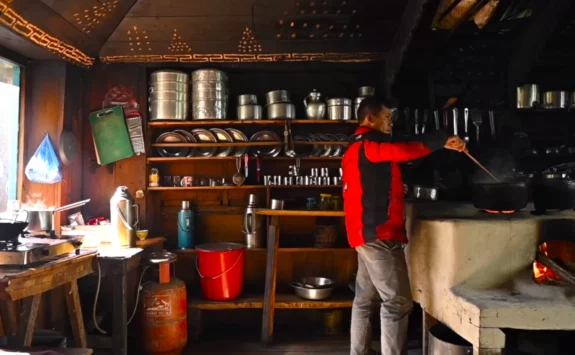Boost Your Energy with Foods Available in Langtang Trek
The Langtang Trek is one of the most well-known and difficult hikes in the world. Its unique culture, beautiful views of the Himalayas, and rough landscape draw adventurers from all over the world. Even though the Langtang Trek is known for its medium-difficulty terrain and beautiful views, the food and drinks you bring with you are also very important to its success and pleasure.
One of the most important things to think about when making plans for this hike is what kinds of foods available in Langtang Trek. To stay healthy and full of energy on your trip, you need to eat and drink the right things.
The Langtang Trek is medium to hard, and after a long day of walking on rough terrain, you burn a lot of calories. That’s why you have to eat nutritious and healthy foods to keep your energy up as you go along the road.
So, how do you keep to your food when you walk?
During the hike to Langtang Valley, what kinds of food are available?
Always keep in mind that you shouldn’t eat too much junk food when you still have a lot of walking to do. So, make sure that the only things you eat are good ones.
This detailed guide will go over the different things you can eat and drink on the trip to Langtang. This blog also has advice to help you get the most out of your great time. Read on to find out what Langtang Valley has to offer, whether you’re a foodie who wants to try something new or a tourist who needs food to keep going.
What Foods Available in Langtang Trek at teahouses?
During the Langtang trek, trekkers can enjoy Nepalese cuisine at local teahouses and small restaurants in the lower elevations. These establishments offer a range of dishes, including the traditional dal bhat (rice and lentils), momos (dumplings), and thukpa (noodle soup). In addition, western-style dishes such as pizza, pasta, and sandwiches are also available.
At higher elevations, the variety of food options may be restricted. Nevertheless, teahouses still provide a range of meals, including soups, stews, and curries made with locally sourced ingredients like potatoes, carrots, and lentils. Trekkers can also find snacks like biscuits, chocolate bars, and energy bars to keep them fueled throughout the day.
While the food options may not be as extensive as those found in larger cities, the Langtang trek still offers an array of delicious and nourishing dishes to keep trekkers energized and satisfied throughout their journey.
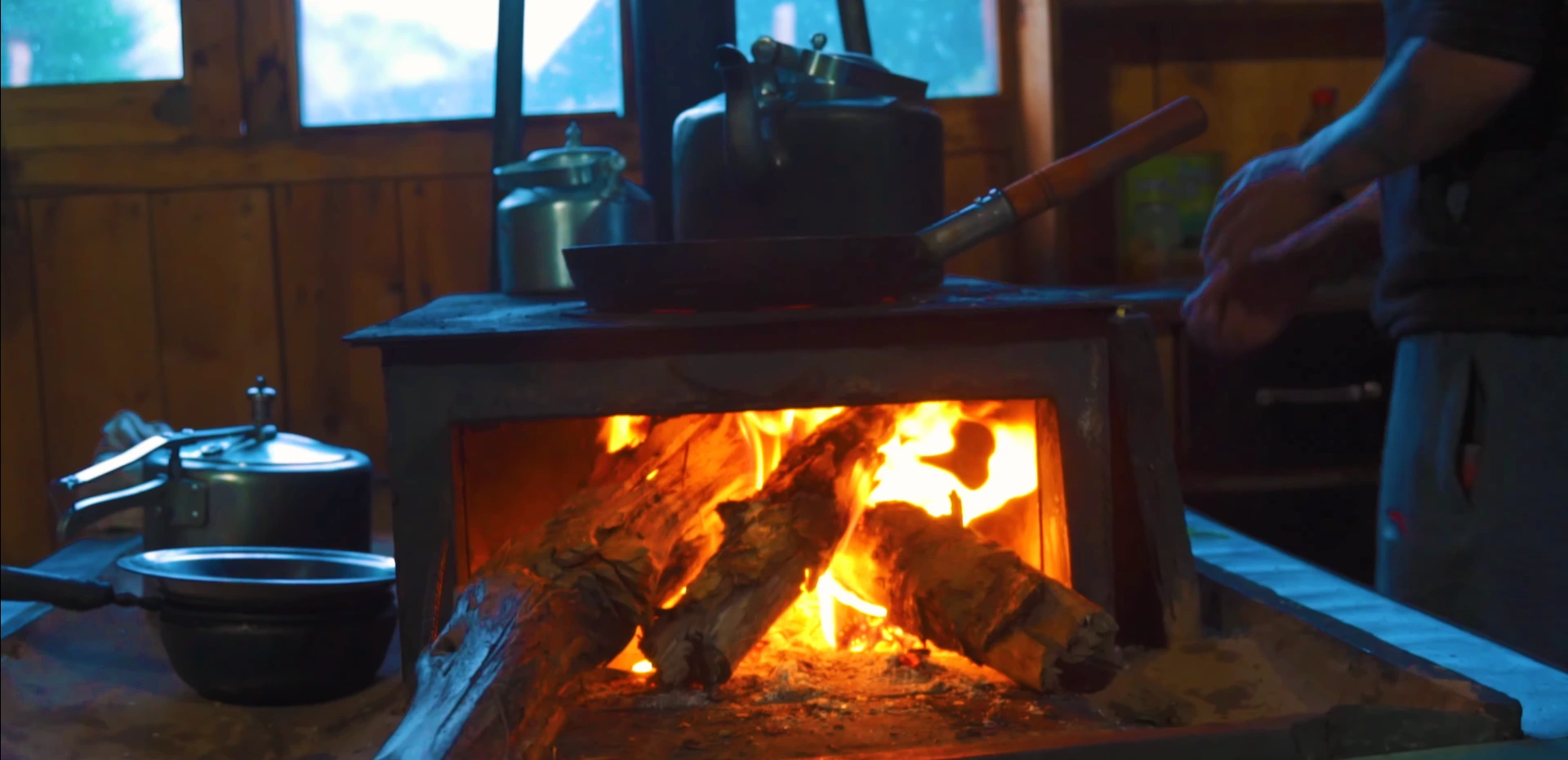
How much is the food price during the Langtang Trek?
The cost of food on the Langtang trek can vary depending on several factors, such as the type of food, the location, and the season. Here are some general estimates of food costs:
- Teahouse Meals: If you are staying in teahouses along the trek, you can expect to pay between $5 and $8 for a basic meal. This is usually a dish like dal bhat, which is rice, lentils, and vegetables, or noodles or momos, which are dumplings. Tea or coffee may be included or cost an additional $1–3.
- Snacks: You can also expect to pay around $2–5 for snacks such as chocolate, energy bars, or biscuits. You can buy the snacks from Kathmandu or Besisahar so that you do not have to buy in high price up there.
- Water: You should budget around $2–3 per liter for bottled water. It is important to stay hydrated during the trek, so you may want to budget for at least 2–3 liters per day.
- Special Meals: If you opt for more elaborate meals, such as pizza, spaghetti, or steak, expect to pay more. These meals may cost $10 to $15 or more.
Overall, you can expect to pay between $12 and $18 per day for food and water on the Langtang Valley Trek. However, keep in mind that prices may be higher during peak trekking season and in more remote areas.
Typical Meals on the Langtang Valley Trek
Food plays an important role in the Langtang Trek for several reasons. First, you’ll need to fuel up well before starting the walk so that you have enough energy to complete it and so that your body doesn’t break down. Eating well is especially crucial when walking at high altitudes because the increased exertion demands of the terrain can lead to fatigue and even altitude sickness if left unchecked.
All three meals (breakfast, lunch, and dinner) are listed below.
Breakfast options during the Langtang Valley Trek
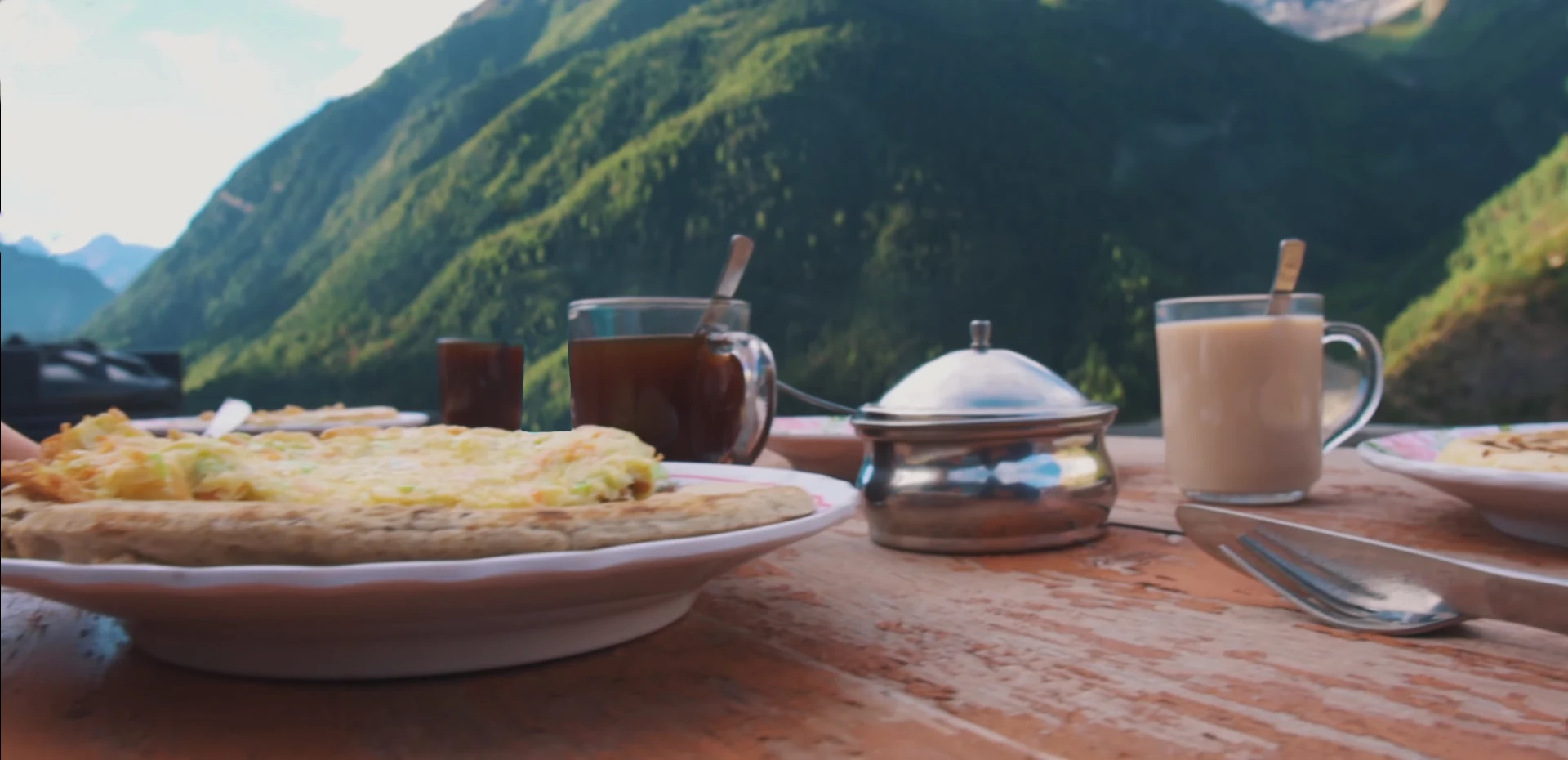
Breakfast is an important meal during the Langtang Trek, as it provides the necessary energy and nutrients to start your day of trekking. Before trekking for the day, you should eat a hearty breakfast. This will help keep your energy up and keep you from getting tired.
Fresh Baked Bread
- Toast bread (jam, peanut, or honey)
- Tibetan bread
- French toast
- Cheese toast
- Toast with baked beans
- Vegetable cheese sandwich
- Tuna veg. cheese sandwich
- Ham cheese sandwich
- Honey toast
- Jam toast
- Toast bread with egg and cheese
- Plain toast
- Tomato cheese sandwich
Eggs
- Boiled eggs
- Plain omelets
- Scrambled eggs
- Fried eggs
- Veg omelets
- Tomato omelet
- Cheese omelets
- Mix omelet
Porridge
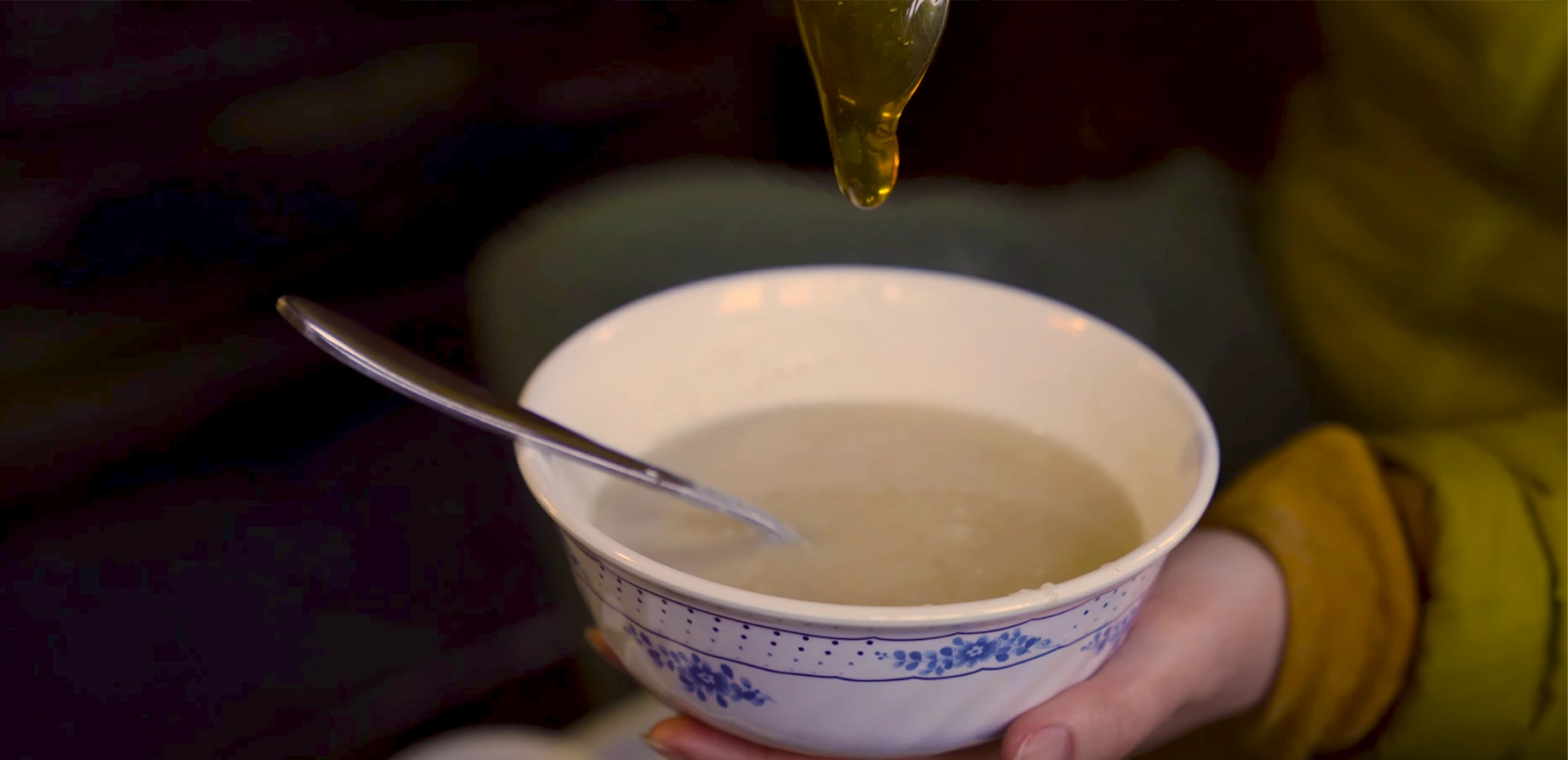
- Oat porridge
- Cinnamon porridge
- Tsampa porridge
- Apple porridge
- Honey porridge
- Porridge with cinnamon and resins
- Muesli with hot milk
- Cornflakes with hot milk
- Rice pudding
- Chocolate pudding
Hash Brown/ Mash Potato
- Hash brown (Veg, Cheese)
- Hash brown (Egg & Cheese)
- Mixed Hash brown
- Mash Potatoes Veg Cheese
- Mash Potatoes Egg-Cheese
- Mix Mash Potatoes
Pancakes & Chapati
- Pancake with jam, peanut or honey
- Apple pancake
- Egg pancake
- Chocolate pancake
- Lemon pancake
- Cinnamon sugar pancake
- Chapati plain
- Chapati egg
- Chapati with honey, peanut butter, eggs, and baked beans
Lunch options during the Langtang Valley Trek
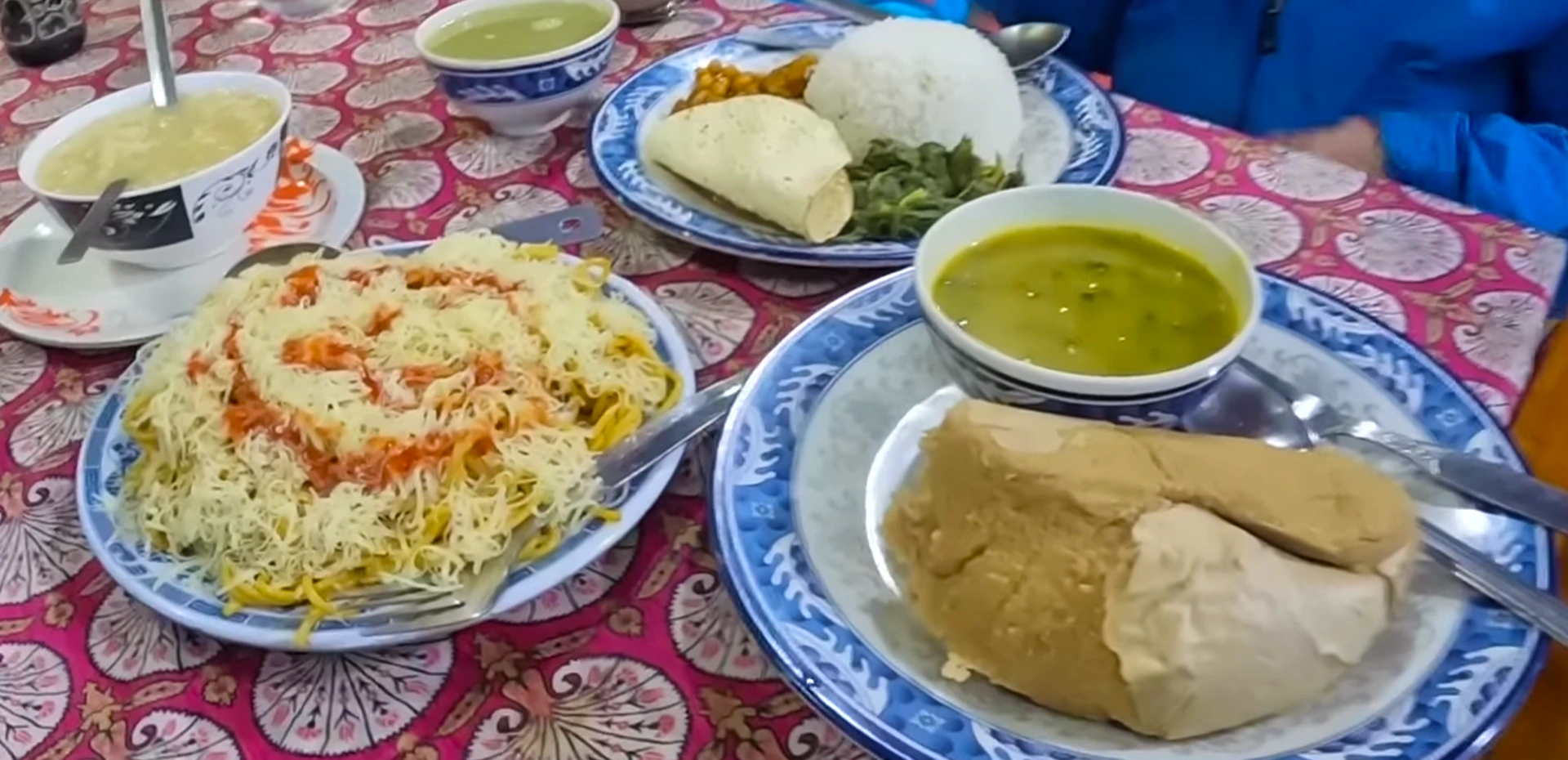
During the trek to Langtang, lunch is usually made of foods high in carbs and whole grains. It is generally served in the afternoon, typically around 12 p.m. to 1:00 p.m.
Traditional Nepalese foods like dal, rice, curry, and pickles are often on the menu at these tea houses. In all of these options, there are various varieties to choose from.
Rice Dish
- Plain rice
- Veg. rice dish
- Chicken rice dish
- Egg curry
- Fried rice (vegetables/cheese/egg/chicken)
- Tuna fried rice
- Mixed fried rice
Noodles
- Veg fried noodles
- Veg cheese fried noodles
- Egg fried noodles
- Fried noodles with cheese
- Mixed fried noodles
- Thukpa
Momos (Steam/ Kothey/ Fried)
- Veg momo
- Buff momo
- Chicken momo
- Cheese momo
- Potato cheese momo
- Tuna momo
- Mixed momo
Pasta and macaroni
- Veg fried pasta
- Cheese fried pasta
- Pasta with cheese and tomato sauce
- Plain macaroni
- Macaroni tomato sauce
- Macaroni tomato sauce with cheese
- Macaroni tomato sauce with tuna
- Macaroni with vegetables, cheese, and egg
- Veg fried macaroni
- Veg fried macaroni with cheese & egg
- Veg fried macaroni with tuna
- Veg fried macaroni with cheese and tuna
Spring Rolls
- Vegetable spring roll
- Egg spring roll
- Veg egg roll
- Veg cheese roll
- Chicken spring roll
- Potato spring roll
- Mix roll
Pizzas
- Pizza Margherita (tomato & cheese)
- Pizza vegetable (tomato, veg & cheese)
- Pizza tuna (tomato, tuna, & cheese)
- Pizza mushroom (tomato, mushroom, & cheese)
- Pizza barbecued chicken (tomato, B.B chicken & cheese)
Spaghetti
- Boiled spaghetti
- Spaghetti cheese and tomato sauce
- Spaghetti tomato sauce
- Spaghetti tomato sauce with tuna
- Spaghetti with tuna, cheese, and tomato sauce
- Veg fried Spaghetti
- Veg fried Spaghetti with cheese & egg
- Veg fried Spaghetti with tuna
- Veg fried Spaghetti with cheese and tuna
- Boiled spaghetti white sauce
- Spaghetti bolognese
Sandwich / Burger (may serve with french fries)
- Veg sandwich
- Omelet sandwich
- Grilled cheese tomato sandwich
- Grilled tomato egg sandwich
- Grilled tuna and tomato sandwich
- Ham sandwich
- Ham and cheese sandwich
- Tuna tomato & cheese sandwich
- Chicken burger
- Cheeseburger
The above food menu is only a sample; you might get more or less depending on the menu of the tea house. Also, the teahouse menu will decrease as you go to a higher altitude.
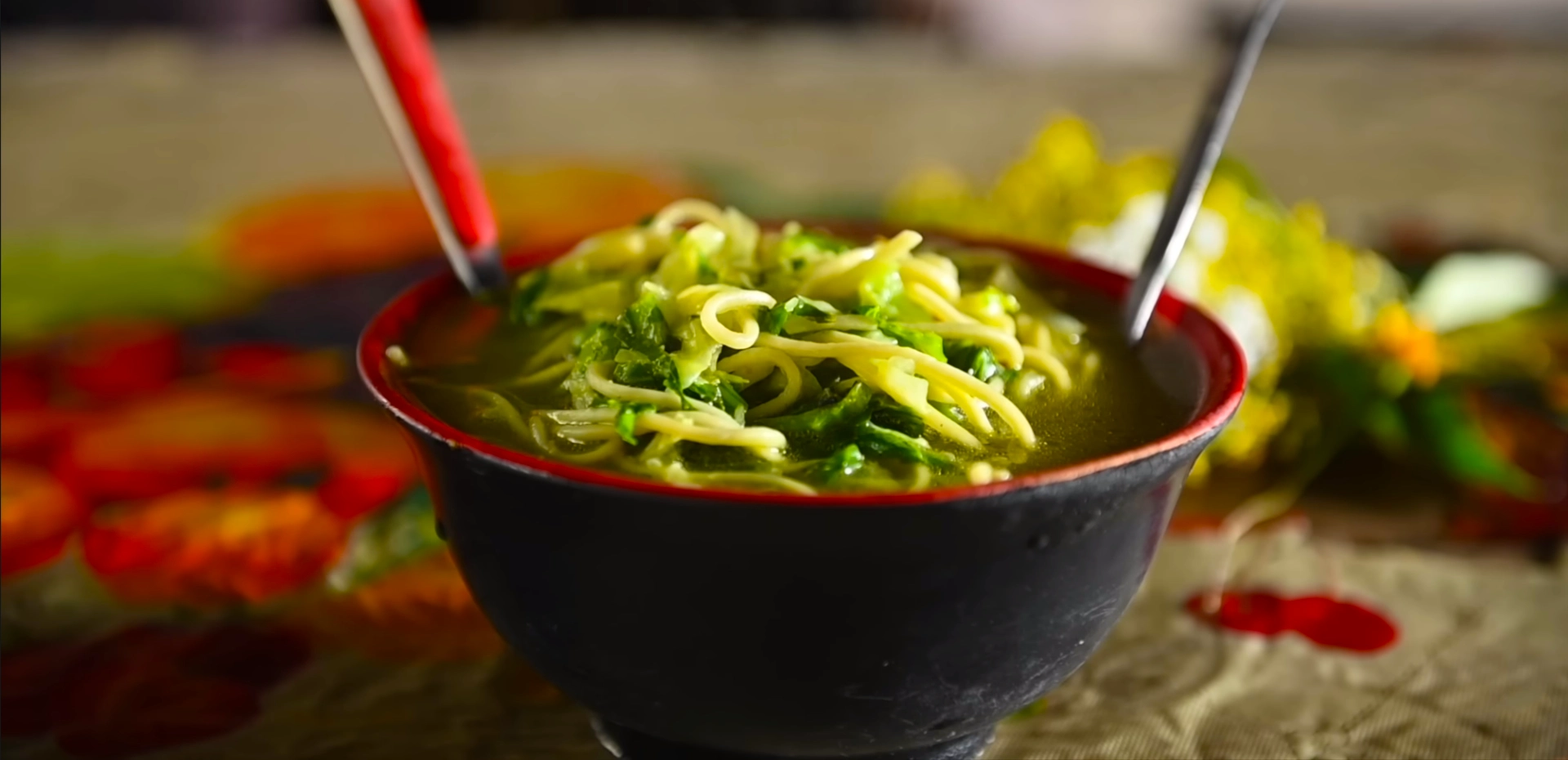
Dinner options during the Langtang Valley Trek
In the evening, between 7:30 and 8:00, you will be served dinner at the lodge. You may expect food that is on par with the lodge’s lunch menu.
The menu features both traditional Nepalese fare like the Dal Bhat and more modern options like pizza and burgers.
Vegetarian or vegan options on the Langtang Valley Trek
The Langtang Valley Trek is an excellent choice for vegetarian and vegan trekkers, as it provides an array of meal options to suit their dietary preferences. The traditional Nepalese dish called dal bhat, which includes rice, lentils, and veggies, is a common meal available in both vegan and vegetarian varieties.
Additional vegetarian and vegan options on the menu include momos, which are dumplings stuffed with potatoes or vegetables and served steamed or fried, and thukpa, a noodle soup prepared with tofu or veggies. The restaurants and teahouses also offer vegetable curries such as chana masala (chickpea curry) and aloo gobi (potato and cauliflower curry).
Breakfast options are also abundant for trekkers, with choices like oatmeal, muesli, and toast with peanut butter or jam. Depending on the season, fresh fruits may also be available at select teahouses.
While some teahouses may utilize animal-based ingredients in their cooking, such as dairy products or ghee (clarified butter), most can cater to specific dietary restrictions and preferences when notified. It is recommended that trekkers inform their guides or teahouse owners of their dietary needs ahead of time to guarantee a successful trekking experience.
Popular snack options on the trek
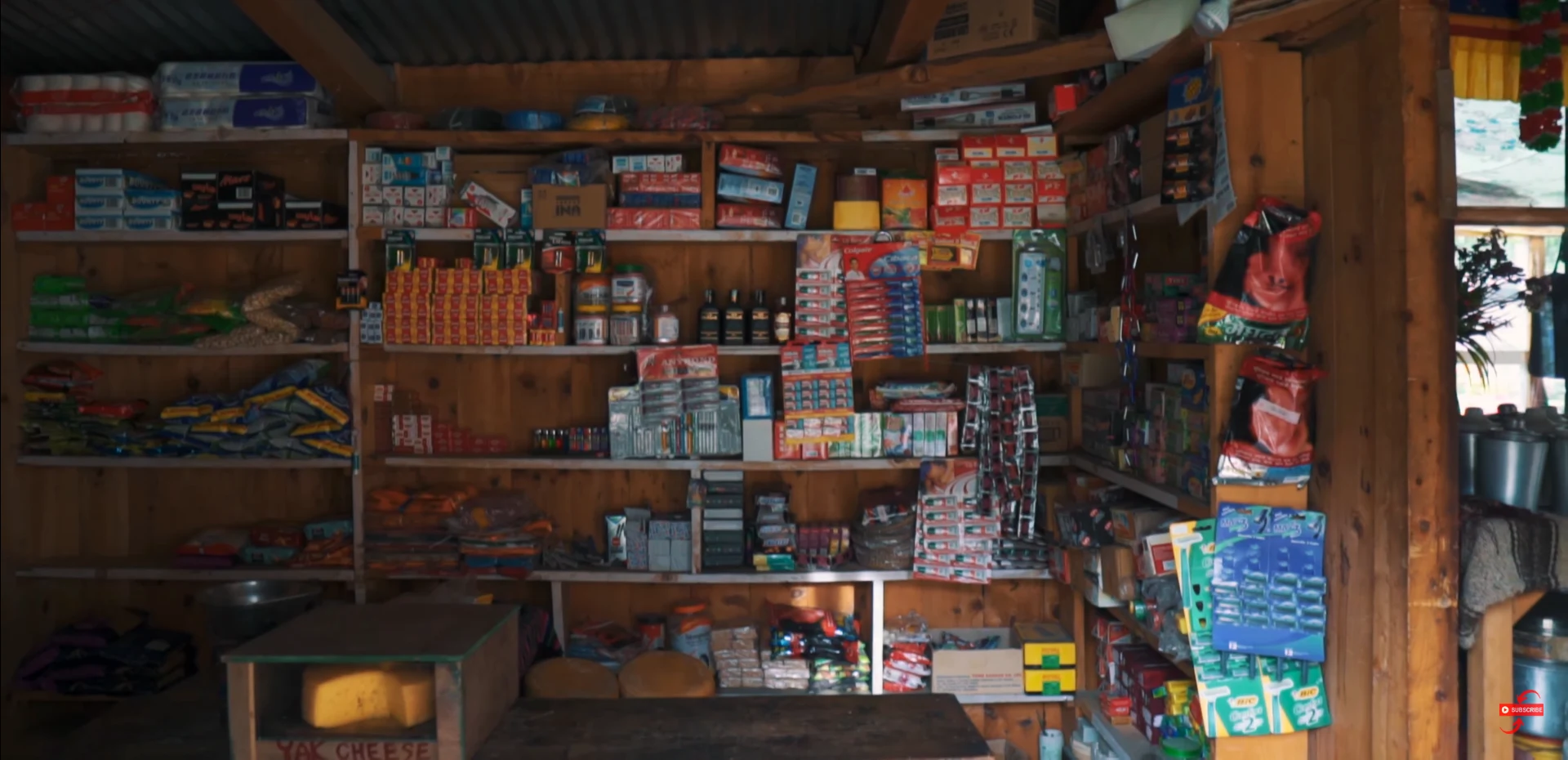
While trekking in Langtang, there are diverse snack options available for you to indulge in. These snacks range from sweet to savory and can provide you with a much-needed energy boost during your trek.
One of the most beloved sweet snacks is Sel Roti, a Nepali sweet bread made from rice flour, ghee, and sugar. Another sweet option is Chiura, flattened rice mixed with sugar, and sometimes nuts or dried fruits.
If you prefer savory snacks, you can opt for roasted peanuts, popcorn, or fried potatoes. Hikers often savor Momo dumplings, filled with either vegetables or meat. Additionally, some teahouses offer Samosas, fried pastry shells filled with spiced vegetables or meat.
You can also carry trail mix with you, consisting of a blend of nuts, seeds, and dried fruits, which can provide you with a quick and easy source of energy during the trek.
It’s crucial to keep in mind that these snacks are high in calories and can be heavy, so it’s best to consume them in moderation to maintain energy levels without feeling too weighed down during your trek.
Tea and coffee on the Langtang Valley Trek
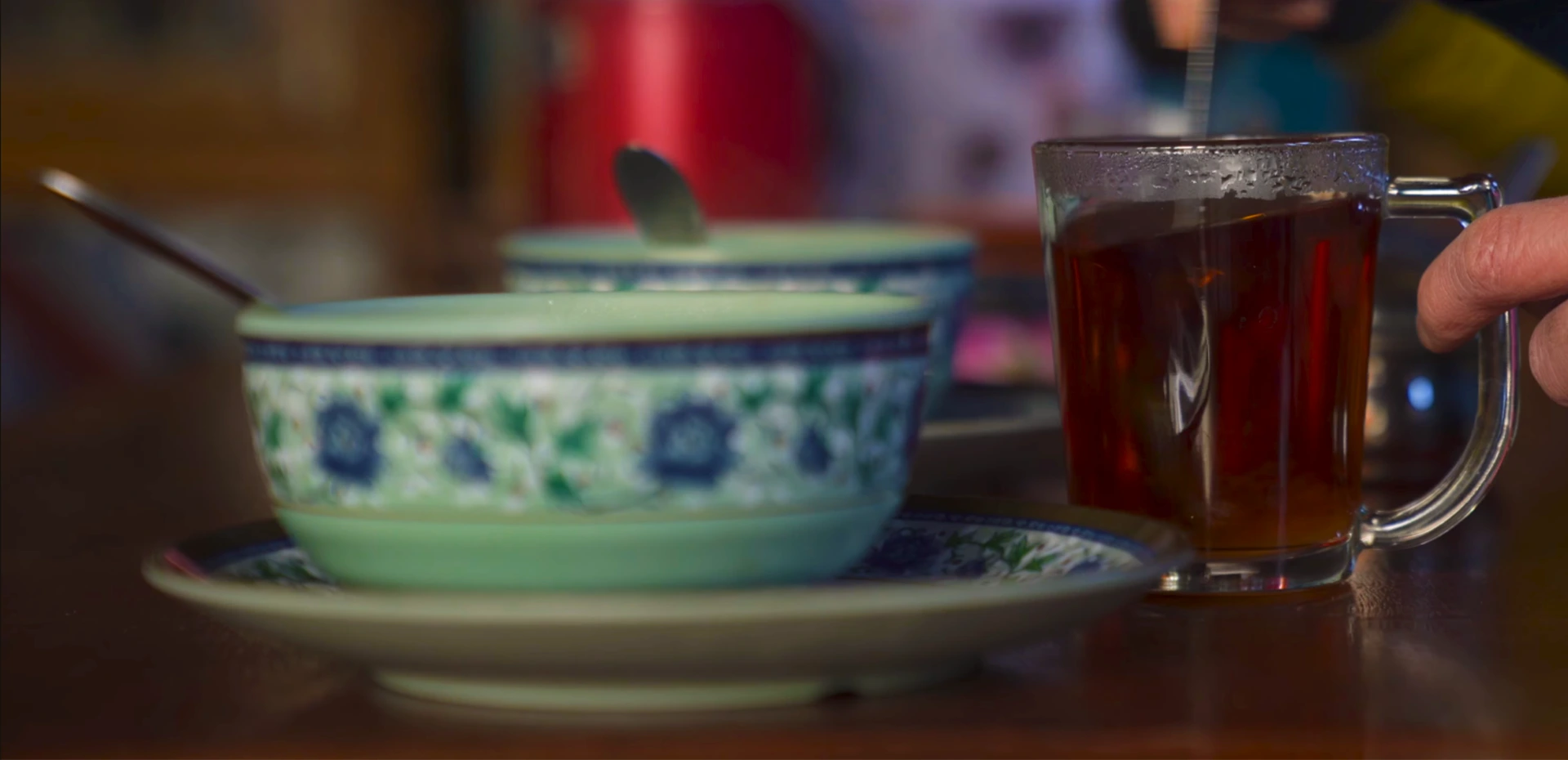
While trekking in the Langtang Valley, you can easily find tea and coffee at the teahouses along the route. Tea is a popular beverage in Nepal, and the teahouses offer various types of it.
Some teahouses also offer coffee, but the quality and availability may differ based on the location. Usually, coffee is more costly than tea, as it is often imported from other regions.
Tea
During the Langtang Valley Trek, you’ll have the opportunity to enjoy a diverse selection of teas that can be easily found at the teahouses along the route. Nepal is renowned for its fondness for tea, and the teahouses ensure that you have plenty of options to choose from.
Here is the list of tea you will get during the Langtang Trek.
- Black Tea
- Milk Tea
- Lemon Tea
- Mint Tea
- Ginger Tea
- Peppermint Tea
Coffee
Coffee is also available on the Langtang trek, but it may not be as widely available as tea. Some tea houses or lodges may have a variety of coffee drinks, such as espresso, cappuccino, or latte. Coffee is usually more expensive than tea on the trek. Additionally, be prepared to pay more for hot drinks as you go higher on the trek.
Here is the list of coffees you will get during the Langtang Trek.
- Milk Coffee
- Black Coffee
- Fresh Filter Coffee
- Espresso
- Latte Macchiato
- Cappuccino
- Mocaccino
Alcoholic beverages on the trek
Although alcoholic drinks are available on the Langtang Trek, they might not be as easily accessible as in urban areas. Additionally, it’s crucial to drink in moderation when trekking at high altitudes. The impact of alcohol can be more pronounced due to the reduced air pressure and oxygen levels, which can increase the likelihood of altitude sickness if consumed excessively. It’s advisable to restrict your alcohol intake and maintain hydration by consuming an adequate amount of water.
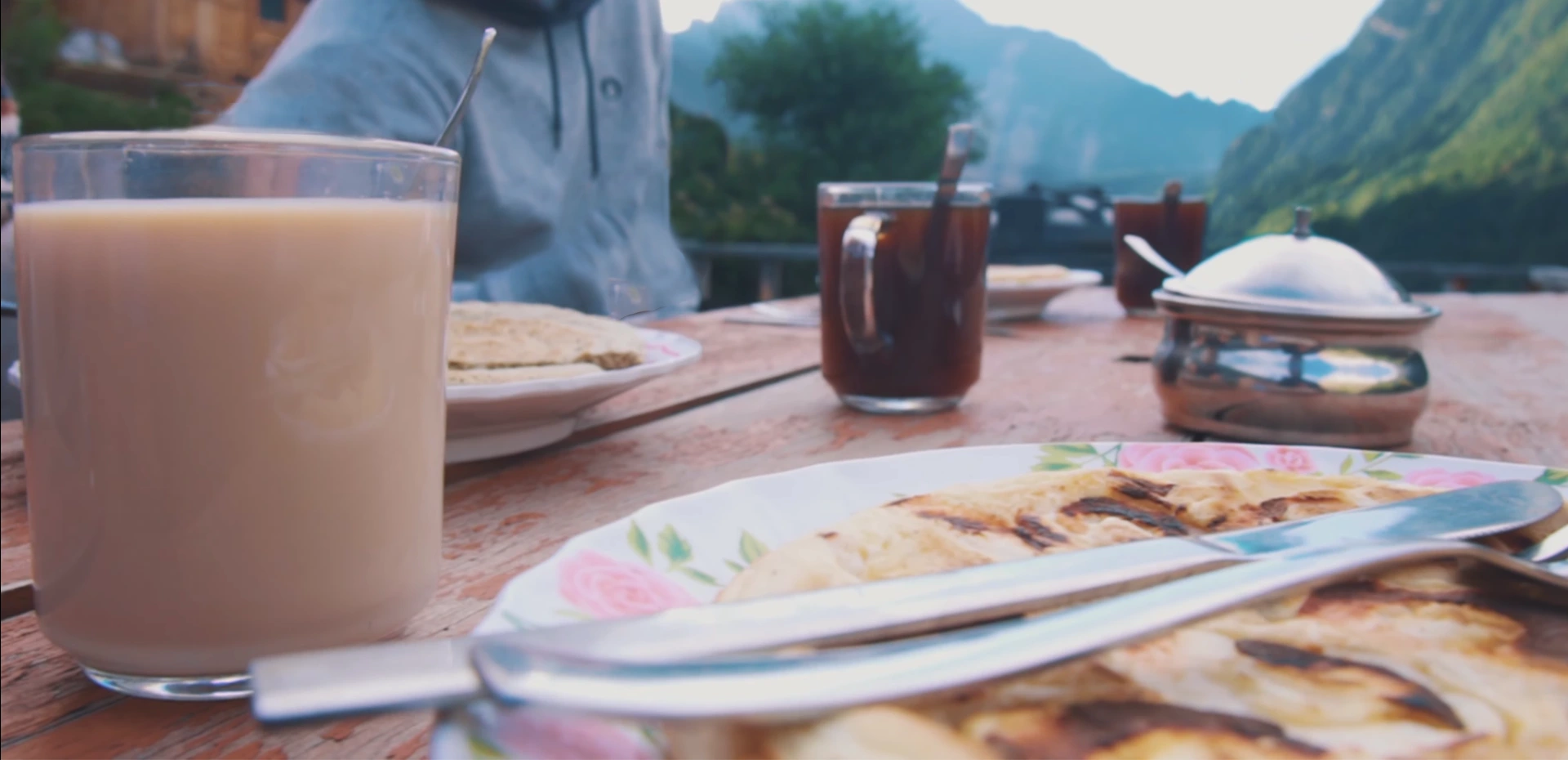
Other popular drink options on the Langtang trek
You will find plenty of other drink options on the trek. Below we provide you with the menu of other drinks along the Langtang Trek.
Hot Drinks
- Hot Lemon
- Hot orange
- Hot Water
- Hot Mango
- Genre Lemon Honey
- Hot Chocolate
Soups
- Rara Noodle Soup
- Vegetable Soup
- Chicken Soup
- Tomato Soup
- Potato Soup
- Lentil Soup
- Sherpa Stew
- Local Noodles Soup
- Tomato Garlic Soup
- Garlic Noodle Soup
What to eat before the Langtang Trek?
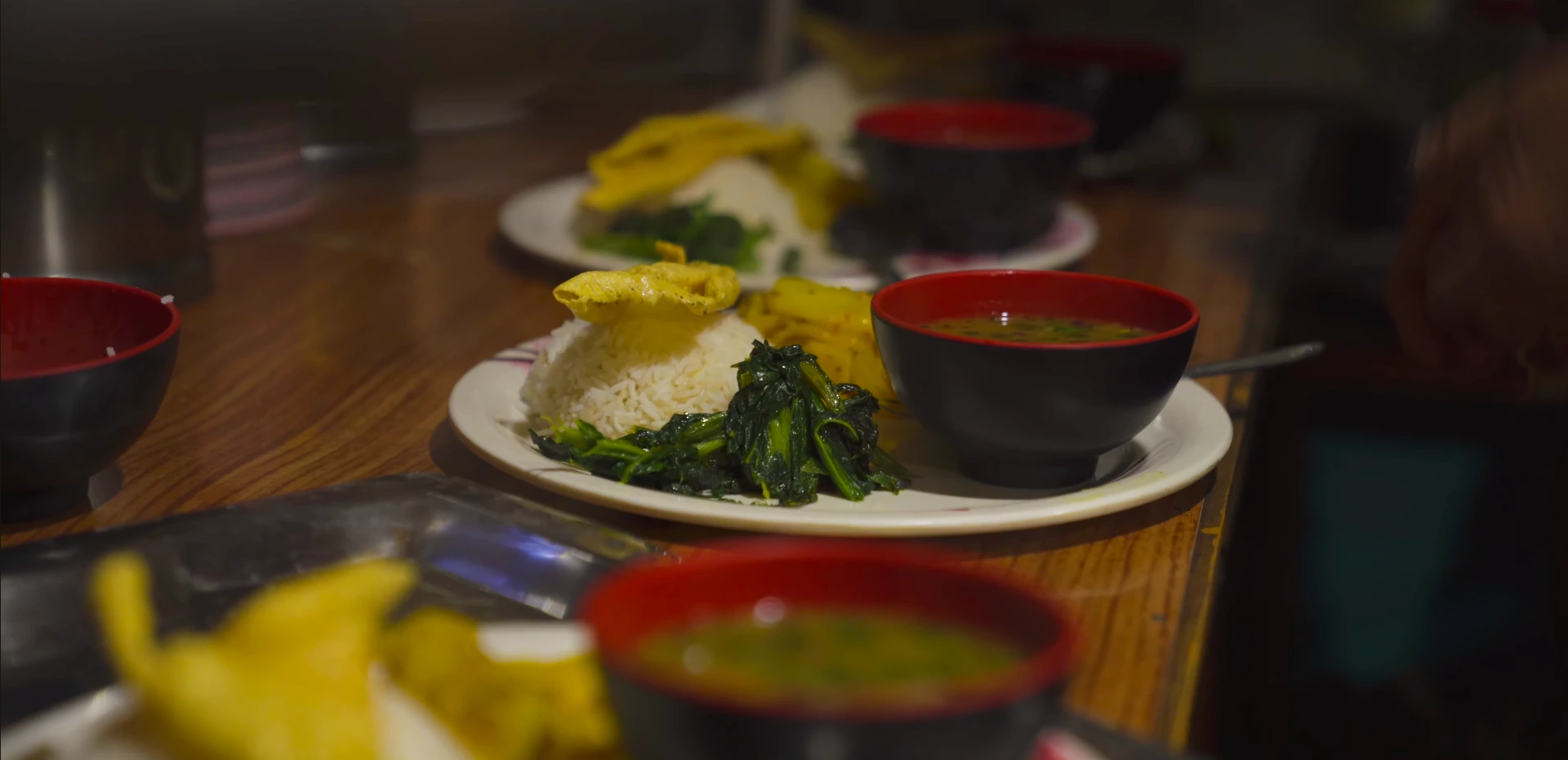
If you’re planning to take on the Langtang Trek, it’s crucial to consume the right foods beforehand to provide your body with the necessary energy and nutrients. Here are some types of foods you can include in your diet:
- Carbohydrates: Carbs like bread, rice, and pasta can provide you with a lot of energy for the trek. They can also make you feel full for a longer period of time.
- Protein: Foods that are high in protein, like fish, chicken, lentils, and beans, can help to build and repair muscles. Make sure you consume enough protein to keep your muscle mass intact during the trek.
- Fruits and Vegetables: Eating a variety of fruits and vegetables can give you the vitamins and minerals you need to keep your immune system strong and maintain good health throughout the trek.
- Hydrating foods and drinks: Staying hydrated is essential, so it’s important to drink plenty of water and consume hydrating foods like watermelon, coconut water, and cucumber to keep your hydration levels up.
- Avoid alcohol and high-fat foods: Steer clear of alcohol and high-fat foods in the days leading up to the trek. They can cause dehydration and digestive issues during the trek.
In conclusion, it’s crucial to consume a balanced and nutritious diet before starting on the Langtang Trek to ensure that your body is well-fueled and ready to take on the journey.
What not to eat during the Langtang Trek?
It’s crucial to be mindful of what you eat while on the Langtang Trek to maintain your health and fitness during the journey. Here are some types of food to avoid:
- Raw or undercooked meat: Consuming meat that hasn’t been cooked well can lead to foodborne illnesses like E. coli or salmonella. Hence, it’s best to steer clear of such meat.
- Tap water: Drinking tap water can increase the risk of waterborne diseases like typhoid or cholera. It’s better to stick to bottled or purified water.
- Fried and high-fat foods: Consuming high-fat or fried foods can cause digestive troubles and lead to dehydration. It’s better to avoid such food items.
- Dairy products: Dairy products like cheese or milk may not be pasteurized and could increase the likelihood of foodborne illness. It’s best to avoid them unless they are pasteurized.
- Street food: Although street food might be tempting, it’s frequently prepared in unhygienic conditions and could lead to foodborne illness. It’s best to eat at established restaurants or teahouses on the trekking path.
What to eat after the Langtang trek?
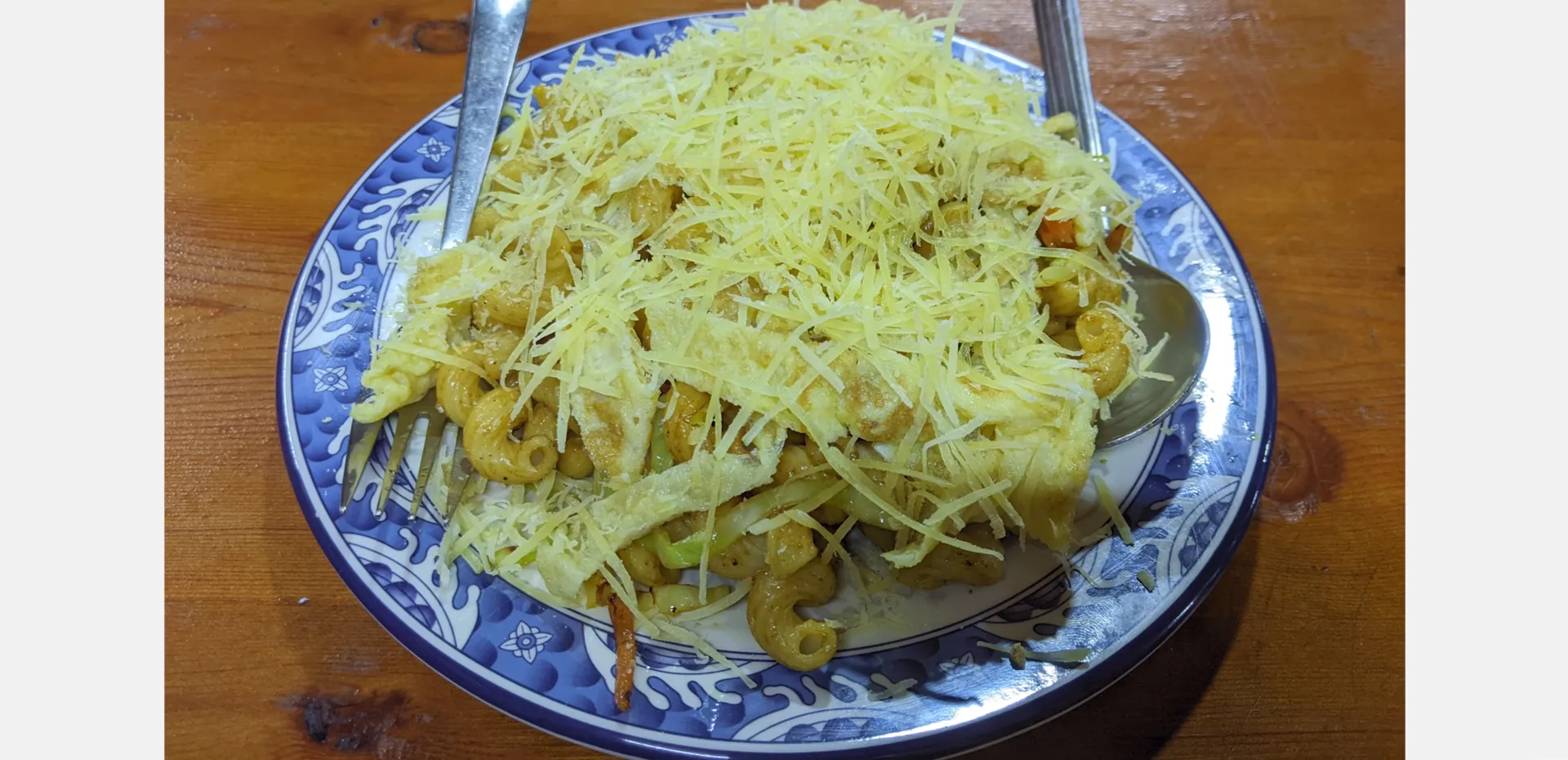
After a strenuous day of trekking in the Langtang region, it’s essential to nourish your body with the right foods to facilitate recovery and prepare for the next day’s trek. Here are some recommended post-trekking foods:
- Protein: Consuming protein-rich foods such as eggs, fish, lean meats, or beans can aid muscle repair and reconstruction. Protein also helps to minimize muscle soreness and fatigue.
- Complex Carbohydrates: Eating complex carbohydrates like quinoa, whole-grain bread, or brown rice can help replenish energy stores and promote recovery.
- Fruits and Vegetables: Fruits and vegetables are high in vitamins and minerals that support recovery, reduce inflammation, and promote hydration.
- Healthy Fats: Eating healthy fats such as seeds, nuts, and avocados can reduce inflammation and aid in recovery.
- Hydrating Drinks: Staying hydrated is crucial after trekking. Drinking sufficient water, coconut water, or herbal teas can aid in replenishing lost fluids.
- Snacks: Healthy snacks such as protein bars, trail mix, or fruits can help maintain energy levels and provide nutrients between meals.
Final Thoughts
Last but not least, don’t forget to pack plenty of food and water for the Langtang Trek. High altitude presents unique obstacles, not the least of which is ensuring that you have access to enough supplies of food, drink, and shelter.
To keep your energy up and your taste buds satisfied, make sure to pack the correct snacks, drink enough water, and eat some of the local fare. It’s also crucial to think about cleanliness and security when deciding where to eat and what to drink.
Maintaining a healthy diet is crucial, so be sure to eat and drink regularly, but also take time to appreciate the Langtang Trek’s distinctive cuisine and eating culture. So, on your next trip to Langtang Trek, be sure to sample some authentic Himalayan cuisine!
In conclusion, the health, energy, and enjoyment of your Langtang journey depend on the food and fluids you pack. We may have a fantastic time climbing to the top of the globe if we watch what we eat and buy from local vendors.
© Copyright 2024 Eco-friendly Treks. Website Developed by: AVIVA


